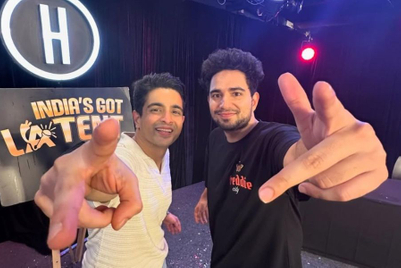.jpg&h=570&w=855&q=100&v=20250320&c=1)
Influencers are the new-age brand ambassadors. With millions of followers, hyper-personalised content, and loyal communities, they offer brands a shortcut to attention. But like all powerful tools, this comes with a catch. The influencer economy sits at a volatile intersection of personality, performance, and public perception. A single campaign can go viral or backfire.
Let's examine a successful example first. The Indian fashionista, social media personality and actress Kusha Kapila has come a long way from her sketch-comedy roots to becoming a household name. Her relatability and voice on social issues helped her cultivate a massive following.
Her latest venture, Underneat, a shapewear brand rooted in body positivity and practical design, is a prime example of how influencer-led businesses can succeed when built on authentic values. Recently backed by Fireside Ventures and Mamaearth’s Ghazal Alagh, the brand shows that Kusha’s credibility goes beyond content; she influences purchase decisions.
What has worked? Authenticity, community trust, and narrative control proved the decisive factors behind Kusha's success. She has long championed conversations around body image, making Underneat a natural progression of her narrative. Her followers don’t just consume her content; they connect with her message. She steers the story, shaping the mission and defining how it reaches the market.
Kapila's trajectory underscores a growing truth in the influencer economy. The substance is the new scale. Increasingly, it is no more about who shouts the loudest but who speaks with integrity and impact.
Brands that once chased follower counts are now shifting focus to meaningful partnerships that offer resonance, relevance, and return. In this evolving landscape, influencer marketing, when done thoughtfully, is emerging as one of the most effective tools for authentic engagement.
Leading Indian brands are already paving the way. Mamaearth, for instance, leaned heavily on a network of micro- and nano-influencers to build its D2C empire, earning trust through relatable content and community-building, particularly among young parents and conscious consumers.
Myntra, on the other hand, leverages a diverse mix of influencers, from celebrities to fashion bloggers. Its campaigns like #MyntraStyleCast not only trend online but also drive real traffic and conversions. boAt Lifestyle strikes a balance, combining star power with targeted influencer networks across tech, music, and lifestyle niches to embed itself in India’s youth culture.
These examples prove that when brands invest in influencer marketing with clarity and consistency, building long-term trust, it becomes more than just a trend. It becomes a strategic advantage.
The gray zone
Then we have the influencers who are famous for ‘being famous’. Orry (Orhan Awatramani), a constant presence at Bollywood parties and high-end brand launches, is more of a socialite than a creator. While his visibility is unquestionable, the value he brings to brands is debatable. Does he drive clicks? Maybe. Sales? Less certain.
Similarly, Shalini Passi, an art patron and luxury influencer, thrives in elite, niche circles. Her endorsements carry weight in high society but may not move the needle for mass-market brands.
In both cases, the brand benefit skews more toward clout association than audience conversion. For luxury, lifestyle, or aspirational campaigns, that might be enough. But for results-driven marketing, it may not be the case.

Risky deals?
Influencer marketing is also about reputation. And when an influencer stumbles, the brands they are associated with often pay the price.
The podcaster Ranveer Allahbadia, also known as BeerBiceps, faced massive backlash when he cracked an inappropriate joke during a podcast appearance on Samay Raina’s YouTube show, India Got Latent. The joke, seen as insensitive and tasteless, quickly went viral for all the wrong reasons. FIRs were filed, social media turned hostile, and brands distanced themselves from him.
Raina, a comedian and streamer with a loyal following, also got caught in the crossfire. Brands that had partnered with him began reconsidering collaborations. Many marketing heads are now hesitant to involve influencers who might pose a risk, no matter how popular.
Given these realities, how should brands work with influencers? Influencers are individuals with platforms. The key is for brands to partner with them strategically instead of shying away entirely.
Let’s explore a possible roadmap. Do a deep dive to start with. Beyond follower count, assess past behaviour, values, audience sentiment, and tone. Focus on fit. Choose influencers whose content naturally aligns with your brand message.
Authenticity cannot be faked. Assess the potential risks involved. Use social listening tools to analyse whether the influencer is prone to controversy.
Prevention is cheaper than crisis management. Create ambassador programmes that allow for gradual audience relationship-building. Don’t rely on one influencer; rather, diversify. Spread the budget across macro, micro, and niche creators.
By prioritising due diligence, authenticity, risk mitigation, long-term vision, and diversification, brands can harness the true power of influence to participate in and lead the conversation, taking their presence and impact to new heights.
Influencer marketing is maturing. The glitz of viral fame gives way to a demand for substance, values, and consistency. The era of simply chasing follower counts is over; strategic alignment, genuine resonance, and measurable impact are important. Brands that recognize this shift and work with influencers as long-term partners will win the attention and the trust of consumers in the present and future.

-- Chandan Bagwe, founder and director of C Com Digital.


.jpg&h=334&w=500&q=100&v=20250320&c=1)
.jpg&h=334&w=500&q=100&v=20250320&c=1)

.jpg&h=334&w=500&q=100&v=20250320&c=1)


.jpg&h=334&w=500&q=100&v=20250320&c=1)


.jpg&h=334&w=500&q=100&v=20250320&c=1)


.jpg&h=268&w=401&q=100&v=20250320&c=1)


.jpg&h=268&w=401&q=100&v=20250320&c=1)


